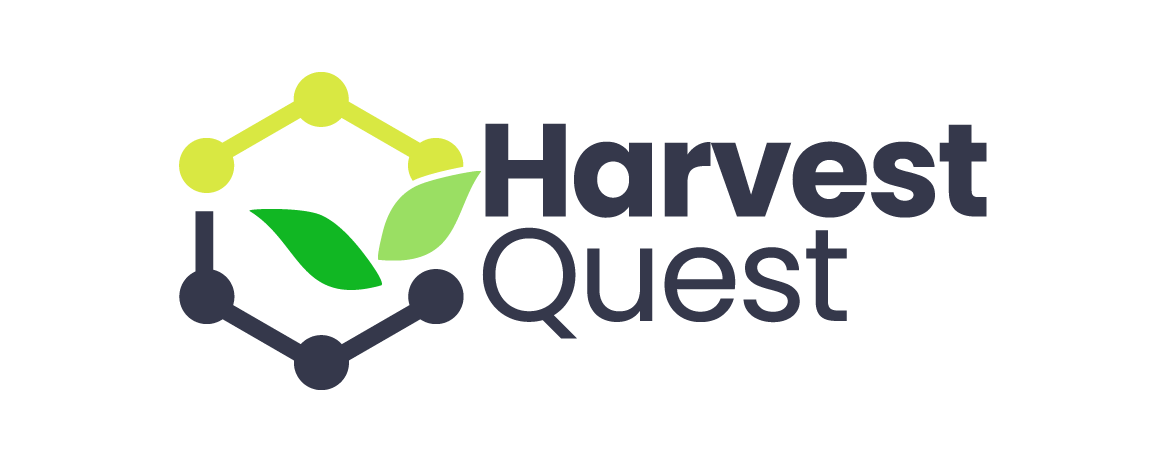Have Achieved Total Reduction in 64 Days Using the Harvest Quest MSAP Method
Kentucky. Rolling hills of bluegrass. World-famous bourbon. The most exciting two minutes in sports. There are myriad images that are conjured when one thinks about this beautiful state, caught equally between the north and the south. But what most people don’t realize is that Kentucky is the number one beef-producer east of the Mississippi River. That’s the claim to fame most relevant to Allan Curtis, Solid Waste Coordinator, Compost Officer and Road Supervisor in Clark County.
“I’ve been here for about three years,” says Allan. “I started as the Road Supervisor but picked up the other two titles about a year ago. And it’s the compost work that has been most interesting and demanding for me for sure.”
Most communities start compost operations to comply with regulations banning green waste from landfills, or to recycle food waste, or to actively generate an organic outcome. But for Clark County, it was to create a more financially neutral solution for the disposal of animal mortalities from area farms. And the majority of those animals are cattle.
Traditional Disposal Costs Nearly Tripled
“Animal composting may seem like a niche application to many people, but it’s becoming a very common consideration,” Allan explains. “And especially in Kentucky. I visited quite a few other sites doing research to get this operation up and running here, and there are a lot of other counties paying close attention to what we’re doing now too.”
Animal disposal is a service that Clark County provides to their constituents at no charge. But the costs internally have risen dramatically. Allan says the county had been using a third-party service that charged roughly $40K per year, but when that outfit lost their taker, the new vendor nearly tripled the cost.
“In a typical year, we’ll collect roughly 1,200 – 1,300 head with a high mark near 1,600. We provide this service at no charge, but when our costs went from $40K per year to more than $140K per year we instantly knew that wasn’t sustainable,” shares Allan. “I started doing research about two years ago and discovered animal composting as a solution. We toured a lot of other facilities and determined we could do this ourselves for a cost of around $40 – $50 per head.”
Manure and Green Waste Collected for Inputs
Composting animals obviously requires quite a bit of sourcing other materials, and starting a compost site from scratch meant finding the inputs, acquiring the equipment, hiring the labor, establishing the process and overcoming all the regulatory hurdles. It also required a significant capital investment that Allan has been able to mostly offset through his skillful grant-writing abilities.
“We’re easily into this endeavor for more than half a million dollars,” he details. “But our trommel, our barrier walls, the loader, stone. I obtained grant money for all of it. Nearly all of this was set up without using county funds, just some matching dollars in labor and fuel.”
Allan has been equally skillful in obtaining the raw materials and inputs necessary for building the windrows in which the livestock mortalities can be composted. And one of the primary ingredients?
“Manure. The same farming communities that we’re providing the mortality service for are out there producing a key input to the process. We’ve also been working with the dairy barns at Eastern Kentucky and the University of Kentucky who are providing us manure free of charge, and the Keeneland Race Track has been a reliable source of both manure and hay too. We just have to haul it.”
Clark County has a regular flow of tree contractors dumping wood chips and other high-carbon green waste on their site to complete the input mix which is roughly comprised of two buckets of manure with one bucket of wood chips and green waste. Each animal is then placed on a bed of this material and covered to allow the composting process to begin. Timing is critical for Allan to maximize site capacity though, and the traditional six to eight months required to naturally compost an animal was definitely not acceptable.
Composting Time Reduced Nearly 300% with Harvest Quest
“I did more research, and that’s when I ran across Harvest Quest. I spoke with Mark [Allen] and he was instrumental in helping us understand the process and learn why Harvest Quest helps. It was quickly clear to me that we didn’t want to even try to get this operation launch without it.”
On April 12, Clark County accepted their first animals and followed the MSAP composting process using the Harvest Quest inoculant. Just for curiosity, Allan ran a separate pile of mortalities without using Harvest Quest to provide a control against which he could measure outcomes.
“After 64 days, we were able to break down a 1,000-pound animal by more than 90%,” he says. “But when we opened the control pile, the progress was nowhere near what we achieved with Harvest Quest. So either I’ve got some magic in my manure, hay and wood chips, or the Harvest Quest is working. And my money is on the Harvest Quest!”
As the proprietary active biology in the Harvest Quest permeates the compost pile, temperatures quickly rise to nearly 150° on the outside of the pile. Within days, these high temperatures spread inward and are maintained consistently for several weeks, creating a pile environment Allan equates to a big Boston pork-butt smoker.
Cutting Costs and Generating Revenue by Adding Value
“Slow and low!” he laughs. “But seriously, for 30 days that biology is sustaining 140, 150 [degrees] and over time it just cooks the animal down to compost. And the high outside temperatures keep our site tidy. We have no buzzards or flies or crazy dogs. We even put a trail cam on our site, and only once did we see a coyote, and he was just rummaging through a trash can someone never emptied. That heat is a huge deterrence.”
One of the many positive outcomes of using the Harvest Quest inoculant and MSAP method is the quality of the finished compost at the end of each cycle. In addition to the beneficial biology that is prolific in the finished product, Harvest Quest compost is also high in nitrogen due to trapped ammonia (which contains odors) being converted to hydrogen and organic nitrogen.
“We have several hay growers and a local greenhouse in the area interested in purchasing our product,” continues Allan. “We’ve sent them samples and are doing some test applications on the 190-acre farm we’re co-located with so we can measure the rate of return on hay grown with our compost and without it.”
On pace to do about 1,500 animals this year, Allan is thrilled that the economics of this process allow them to not only continue offering the no-charge mortality removal service to the county, but also contribute to an organic cycle that benefits the local environment as well. Other counties in Kentucky are paying close attention, and Allan hosts planners and managers from around the state looking to replicate his results.
“The problem is one shared by every county in the state,” he concludes. “The solution may be fairly new, but it’s clear that it works. Others were very helpful to us when we were getting started, and we’re happy to work with others who see the value in this too.”

